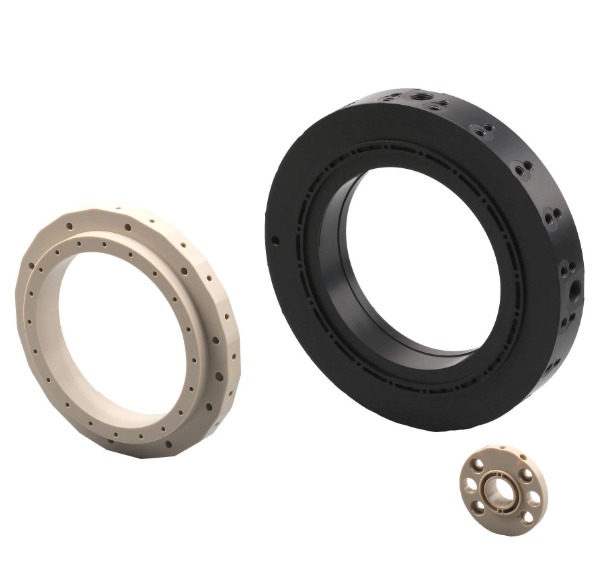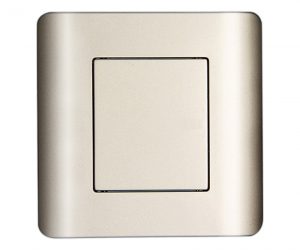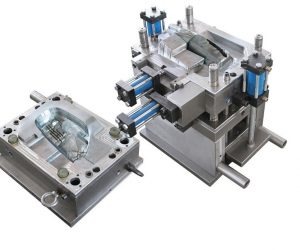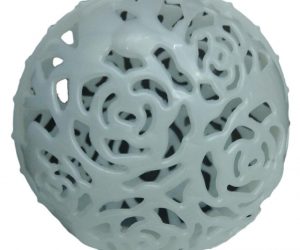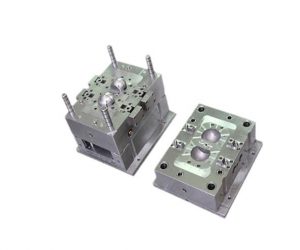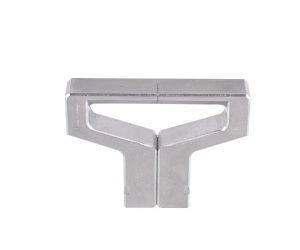The intricacies of manual injection molding demand a deeper understanding than a simple operational overview. This isn't merely about churning out plastic parts; it's about mastering a delicate interplay of thermodynamics, material science, and precision engineering. Failure to appreciate these nuances results in suboptimal performance, premature wear, and potentially catastrophic failure.
This treatise delves into the critical components of a manual injection molding machine, not as discrete entities, but as interdependent elements within a complex system. Their interaction dictates the final product's quality and the machine's lifespan.
The Injection Head: A Crucible of Pressure and Temperature: The injection head, far from being a simple nozzle, is a precision-engineered component subjected to extreme thermal and mechanical stress. Its construction, typically from high-alloy steels or specialized ceramics, directly impacts its resistance to degradation from molten polymers and the cyclical pressures it endures. Minute imperfections can lead to premature failure, resulting in costly downtime and potentially hazardous situations. The design, involving intricate flow channels and precisely controlled heating elements, warrants meticulous inspection and, crucially, understanding of the material compatibility with the polymers being processed.
The Mold: A Microcosm of Precision: The mold, often crafted from hardened tool steels or aluminum alloys, is the defining element. Its geometry, far beyond simple shape, dictates the final part's dimensional accuracy, surface finish, and even its structural integrity. The intricate network of cooling channels, critical for rapid solidification and minimizing warping, necessitates expert design and manufacturing. Minute deviations from the specified tolerances translate directly into flawed parts, rendering the entire process inefficient.
Thermal Management: Beyond Simple Heating: The heating system isn't merely about melting the polymer; it's about precise temperature control throughout the injection cycle. Variations in temperature translate into variations in viscosity, influencing flow characteristics and ultimately, part quality. The heater's design, often involving sophisticated feedback loops and PID control, necessitates regular calibration and maintenance to ensure consistent performance. Ignoring this leads to inconsistent melt flow, resulting in short shots, weld lines, and ultimately, scrap.
Pressure Control: A Symphony of Forces: The pressure control system isn't simply a pressure gauge and valve; it's a dynamic regulator of forces within a confined space. Precise control of injection pressure, holding pressure, and back pressure directly influences the density, structural integrity, and surface finish of the molded part. Malfunction here leads to a cascade of problems, from incomplete filling to part deformation.
Cooling: The Art of Controlled Solidification: The cooling system is not merely a cooling water circuit; it's a precisely engineered system that dictates the rate of solidification. Rapid cooling minimizes warping and internal stresses, while slow cooling can lead to sink marks and dimensional inaccuracies. The design of the cooling channels within the mold is paramount, requiring careful consideration of polymer properties and thermal conductivity.
Maintenance: A Proactive Approach to Longevity: Maintenance transcends simple cleaning and lubrication. It necessitates a proactive approach involving:
- Predictive Maintenance: Employing sensors and data analysis to anticipate potential failures before they occur.
- Non-Destructive Testing: Utilizing techniques like ultrasonic inspection to detect internal flaws in components.
- Statistical Process Control: Implementing rigorous monitoring and data analysis to identify trends and prevent deviations from optimal performance.
Operating a manual injection molding machine is not a simple task; it's a demanding process requiring a deep understanding of the underlying principles and a commitment to meticulous maintenance. Only through this approach can one achieve consistent high-quality production and maximize the machine's lifespan.
Hand injection molding: A nuanced exploration beyond the superficial. The seemingly simplistic act of manually operating a compact injection molding machine belies a complex interplay of physics, material science, and operator skill. This isn't merely a guide; it's a dissection of the subtle forces at play, revealing the unpredictable nature inherent in this seemingly controlled process.
The machine itself, a microcosm of industrial processes, comprises several critical subsystems, each a potential source of both efficiency and catastrophic failure. The clamping unit, far from a passive component, is a dynamic force-balancer, subject to the unpredictable stresses of molten polymer injection. The platens, seemingly inert, are battlegrounds where microscopic imperfections and thermal gradients conspire to influence mold closure and part ejection, potentially leading to warping, flash, or complete mold failure. The injection unit, the heart of the machine, is a crucible of controlled chaos. The seemingly simple act of melting plastic pellets is a complex dance of shear forces, heat transfer, and polymer degradation. The plunger's trajectory, seemingly predictable, is subtly influenced by friction, pressure fluctuations, and the inherent viscosity variations within the molten polymer itself. A seemingly minor fluctuation in temperature can lead to a cascade of unpredictable consequences, culminating in a flawed part or a machine malfunction. The control system, whether hydraulic or purely manual, introduces another layer of complexity. The operator, a critical component often overlooked, introduces a variable element – skill, fatigue, and even subconscious biases can subtly influence the outcome.
The advantages of hand injection molding are undeniable for niche applications: affordability, accessibility, and the unique control afforded by direct manipulation. However, these advantages are inextricably linked to its inherent limitations. The production speed, a function of human dexterity and the machine's mechanical limitations, is inherently slow and unpredictable. The precision of injection pressure and temperature control, while adequate for certain applications, pales in comparison to the tightly regulated environments of automated systems. This lack of precision translates directly to variability in part quality, a critical factor that often necessitates extensive post-processing and quality control.
Selecting the appropriate mold and material is not a simple choice; it's a strategic decision with far-reaching consequences. Mold design, seemingly straightforward, requires a deep understanding of polymer flow dynamics, thermal expansion, and the subtle interplay between mold geometry and part ejection. An improperly designed mold can lead to a cascade of problems, from incomplete filling and surface defects to catastrophic mold failure. Material selection is equally critical. The choice of polymer isn't just about achieving desired mechanical properties; it's about understanding the material's rheological behavior under the specific conditions of the injection process. An inappropriate material choice can lead to degradation, poor flow characteristics, and ultimately, parts that fail to meet specifications.
Maintenance is not merely a matter of lubrication and cleaning; it's a proactive strategy to mitigate the unpredictable wear and tear inherent in the process. Regular inspection, far from a routine task, is a critical step in identifying potential sources of failure before they lead to catastrophic consequences. Operator training is not just about safety; it's about cultivating an understanding of the subtle nuances of the process, enabling the operator to anticipate and mitigate potential problems.
In conclusion, hand injection molding, while seemingly simple, is a complex and unpredictable process. Its inherent limitations, while significant, are often outweighed by its advantages in specific contexts. Success requires a deep understanding of the underlying physics, material science, and the unpredictable human element. Only through meticulous attention to detail, proactive maintenance, and skilled operation can the inherent unpredictability of this process be managed, resulting in the creation of high-quality plastic parts.
What is a hand injection moulding machine?
A hand injection moulding machine is a type of plastic processing equipment that uses manual force to inject molten plastic into a mould cavity. The machine consists of a heating cylinder, a plunger, a nozzle, and a mould. The heating cylinder melts the plastic material and keeps it at a constant temperature. The plunger pushes the molten plastic through the nozzle into the mould cavity, where it cools and solidifies into the desired shape. The mould can be made of metal, wood, or plastic, depending on the type and size of the part.
Hand injection moulding machines are suitable for small-scale production of simple and complex parts, such as toys, household items, medical devices, and automotive components. They are also ideal for prototyping and testing new designs before investing in more expensive and automated machines. Hand injection moulding machines offer several advantages over other types of plastic processing equipment, such as:
- Low cost: Hand injection moulding machines are relatively cheap and easy to obtain compared to other machines. They do not require electricity or compressed air to operate, which reduces operational costs and environmental impact.
- Flexibility: Hand injection moulding machines can work with various types of plastic materials, such as thermoplastics, thermosets, elastomers, and bioplastics. They can also produce parts with different shapes, sizes, and colors by changing the moulds.
- Simplicity: Hand injection moulding machines are easy to use and maintain. They do not have complicated controls or settings that require technical skills or training. They also have fewer moving parts that can wear out or break down over time.
- Quality: Hand injection moulding machines can produce high-quality parts with good dimensional accuracy and surface finish. They can also reduce material waste and defects by controlling the injection pressure and speed manually.
What are the main parts of a hand injection moulding machine?
Let's talk about how a hand injection moulding machine works. It's got four main parts: the heating cylinder, the plunger, the nozzle, and the mould. Each part plays its own special role in getting the job done.
First up, the heating cylinder. This is where the plastic gets melted down and stays at just the right temperature. It's usually made of metal and has either an electric heater or a gas burner to keep things hot. Plastic is fed into this cylinder either by hand or with a hopper. There's also a sensor inside that keeps track of the temperature and adjusts the heat if needed.
Next, we have the plunger. This part pushes the melted plastic through the nozzle into the mould. It's also metal and comes with a handle or lever for easy use. The plunger fits tightly inside the heating cylinder and has a rubber seal at the tip to stop the plastic from leaking back. After pushing the plastic out, a spring or weight helps it snap back to its original spot.
The nozzle connects the heating cylinder to the mould. It's metal too and shaped like a cone so the plastic can flow smoothly into the mould. Its tip matches up with the sprue, which is the channel linking the nozzle to the mould. Depending on the mould, the nozzle can be fixed or adjustable.
Finally, there's the mould itself. This is what shapes the molten plastic into the final product. Moulds can be made of metal, wood, or plastic, depending on what you're making. They have two halves that fit together to create a cavity in the shape of your part. Vents let air and extra plastic escape during the process. And depending on the part, you can clamp or unclamp the mould as needed.
How to maintain and replace hand injection moulding machine parts?
To ensure optimal performance and longevity of your hand injection moulding machine, you need to maintain and replace its parts regularly. Here are some tips on how to do so:
- Clean the heating cylinder, plunger, nozzle, and mould after each use. Remove any residual plastic material from the parts using a scraper, a brush, or a cloth. Avoid using abrasive or corrosive substances that can damage the parts.
- Lubricate the plunger, nozzle, and mould before each use. Apply a thin layer of oil or grease to the parts to reduce friction and wear. Avoid using too much lubricant that can contaminate the plastic material or clog the nozzle.
- Inspect the heating cylinder, plunger, nozzle, and mould for any signs of damage or wear. Check for cracks, dents, scratches, corrosion, or deformation on the parts. Replace any damaged or worn parts as soon as possible to prevent further damage or malfunction.
- Store the heating cylinder, plunger, nozzle, and mould in a dry and cool place. Protect the parts from moisture, dust, dirt, or extreme temperatures that can cause rusting, warping, or cracking. Cover the parts with a cloth or a plastic bag when not in use.
Where to buy hand injection moulding machine parts?
If you need to buy new or replacement parts for your hand injection moulding machine, you have several options to choose from. You can buy them from:
- The manufacturer of your machine. This is the best option if you want to ensure compatibility and quality of the parts. You can contact the manufacturer directly or through their authorized dealers or distributors. You can also check their website for online ordering and delivery options.
- The supplier of your machine. This is another good option if you want to get original or compatible parts for your machine. You can contact the supplier directly or through their online platforms. You can also check their catalog for available parts and prices.
- The online marketplace. This is a convenient option if you want to compare different brands and models of parts for your machine. You can browse through various websites that sell hand injection moulding machine parts and choose the ones that suit your needs and budget. You can also read reviews and ratings from other customers to get an idea of the quality and performance of the parts.
- The local store. This is a quick option if you want to get generic or universal parts for your machine. You can visit a nearby hardware store or a hobby shop that sells hand injection moulding machine parts and pick the ones that fit your machine. You can also ask for advice from the staff or other customers on how to use and install the parts.
